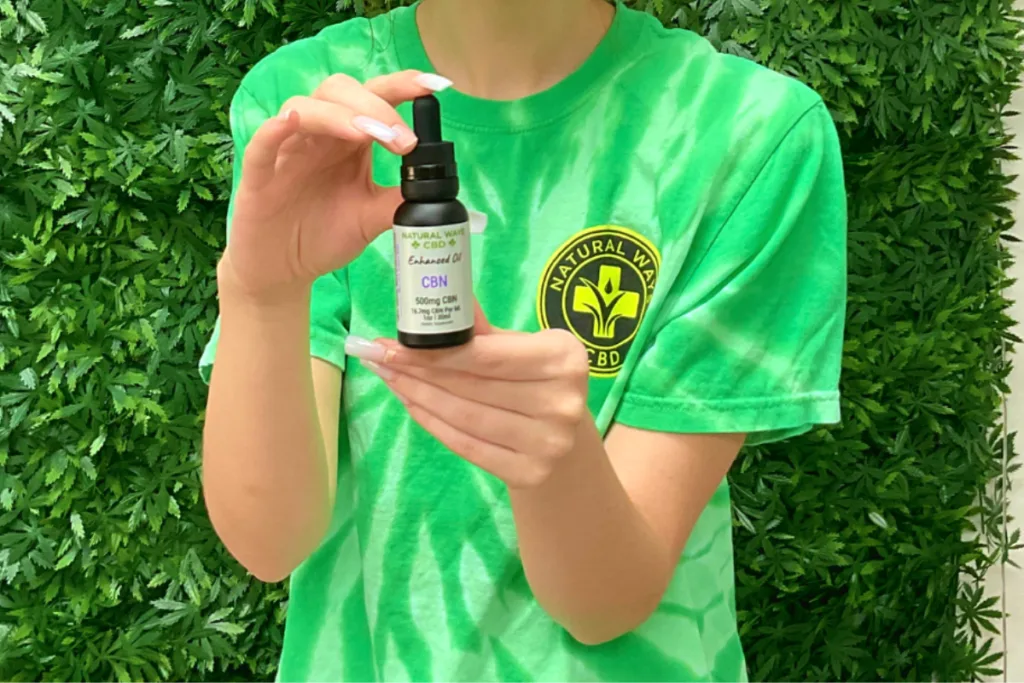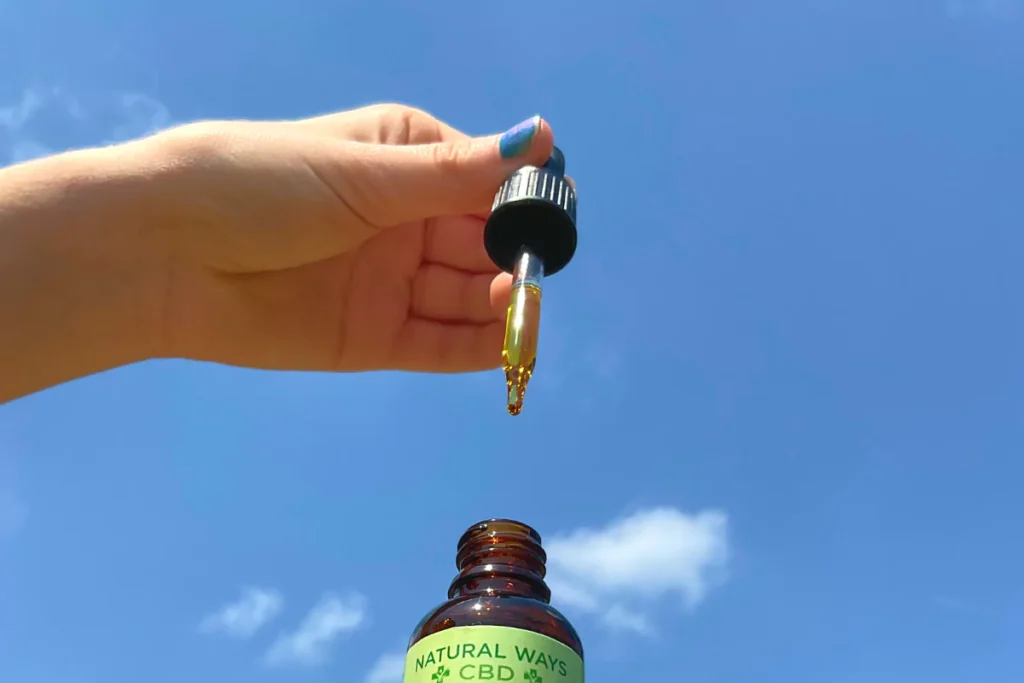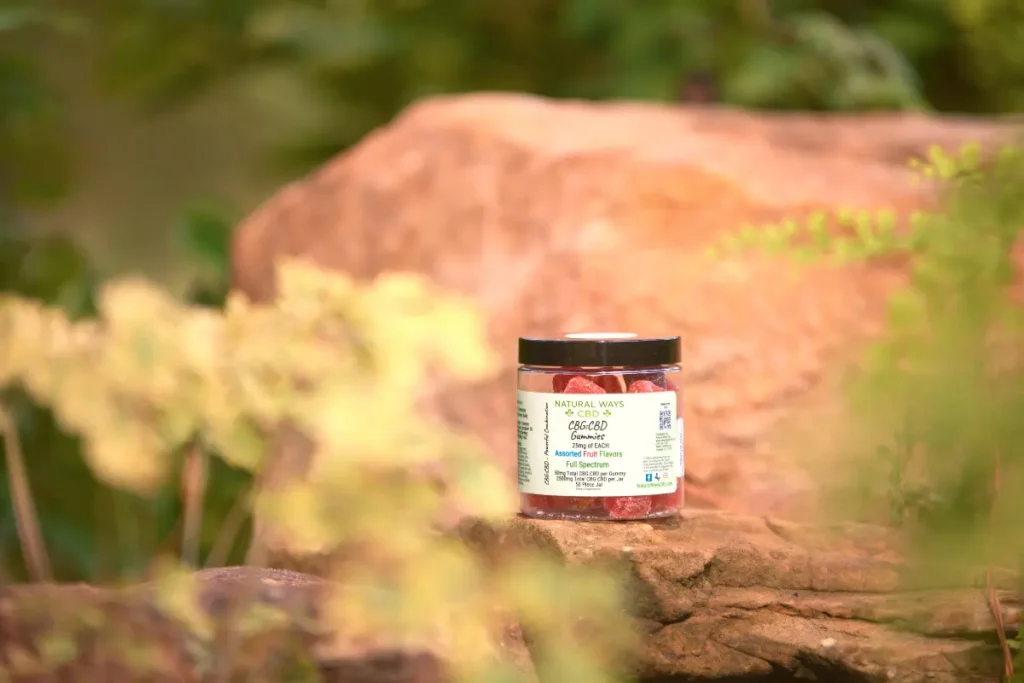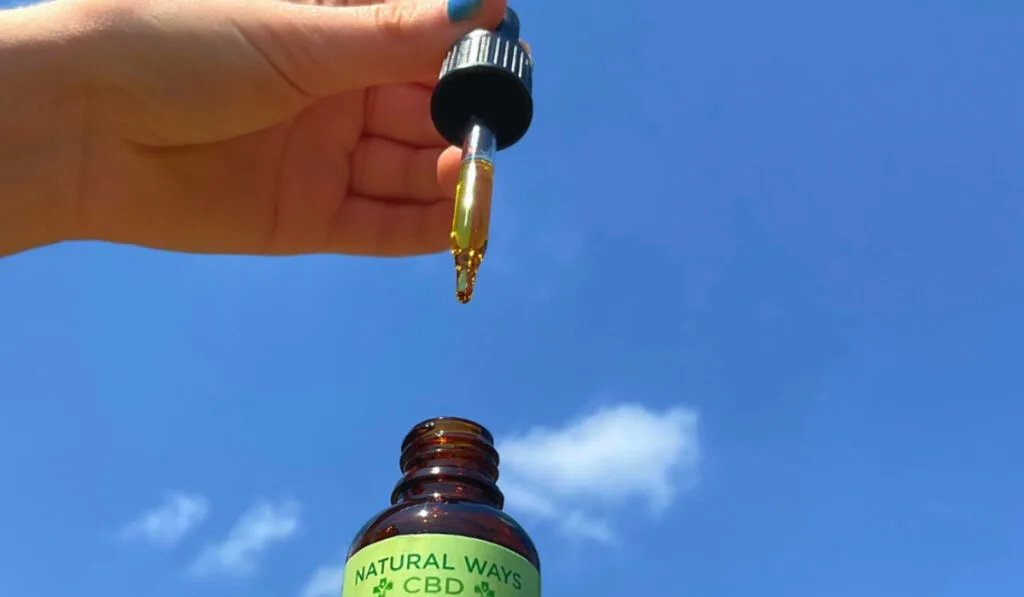

When people begin researching hemp-derived cannabinoids for sleep, the go-to cannabinoid is usually cannabidiol (CBD). After all, it offers a diverse range of benefits and is seemingly helpful for everything.
However, CBG and CBN, two “alt-cannabinoids,” have recently been gaining popularity for their variety of benefits. And among these benefits is the ability to promote restful sleep.
But which is better?
CBG and CBN are both effective for sleep, but in different ways. CBG is effective at addressing issues that make falling asleep difficult, such as inflammation and physical discomfort, while CBN is more effective at directly promoting sleep.
In this article, we’re going to explore CBG and CBN benefits for sleep and help you decide which is most effective for you.

What is CBG?
Cannabigerol (CBG) is one of more than 100+ naturally occurring cannabinoids in the cannabis sativa plant (hemp is federally-legal cannabis sativa containing less than 0.3% THC).
Although not as abundant as cannabinoids like CBD and delta 9 THC, it has an abundance of benefits as these other cannabinoids do.
CBG is known for its mentally uplifting effects and potential therapeutic benefits for pain and anxiety.
What is CBN?
Cannabinol, or CBN, is a cannabinoid that naturally occurs in the cannabis sativa plant.
Scientists discovered CBN nearly 100 years ago, but it was relatively unknown and unused by the general public for decades.
However, some THC users began to realize that smoking hemp flower containing high amounts of CBN along with THC produced a mellower, drowsier high than flower that didn’t contain as much CBN.
This led many people to believe that CBN has sedative properties. Although the research on this is mixed, anecdotal evidence suggests CBN is indeed beneficial for sleep. CBN has also been researched for anxiety, pain, and more.
High-Level Differences Between CBG and CBN
There are three main areas of difference between CBG and CBN: how they occur in the cannabis sativa plant, their effects, and their appearance on drug tests.
Occurrence in hemp
CBG comes from CBGa, which is the “mother of all cannabinoids.” Therefore, CBG is present in young hemp plants.
CBN, on the other hand, is created as THC ages and breaks down, so it’s found in higher concentrations in aged hemp plants.
Effects
CBG tends to be uplifting and slightly energizing. It creates a “lift,” but it won’t get you high. Instead, its effects are more comparable to coffee.
CBN, on the other hand, is deeply relaxing, slightly sedative, and will get you slightly high. However, it’s nowhere near as strong as THC is; anecdotal evidence suggests it’s ¼ as potent.
On drug tests
Neither CBG nor CBN are screened for on drug tests. This means CBG products won’t cause you to fail a drug test unless they also contain THC.
However, CBN may cause you to fail a drug test. CBN is created as THC degrades, and is therefore chemically very similar to THC – testing technology may be unable to tell the difference sometimes.

Benefits of CBG for Sleep
CBG may help with sleep in several different ways. While there isn’t much research looking at CBG’s direct effect on sleep, research on CBG for other uses that impact sleep offer additional evidence.
CBG’s effects on sleep
A 2022 survey of people using CBG products found that this cannabinoid has therapeutic potential in several areas, sleep being one of them.
This survey included responses from 127 U.S.-based participants who had used CBG in the past 6 months. Of the respondents, 30.7% were using CBG for insomnia or sleep disturbances.
This indicates that some people find CBG helpful for this use. But an even more compelling finding of the survey was that 73% of respondents reported that CBG-predominant products worked better than conventional medicines for insomnia [1].
While CBG isn’t a treatment for insomnia, this survey indicates it has sleep-promoting benefits.
CBG may promote mental relaxation
CBG has demonstrated potential anxiolytic (anti-anxiety) properties in several studies, and many people use CBG for anxiety.
One research review, from 2003, found a strong correlation between anxiety disorders and sleep disturbances, such as insomnia [2].
If CBG can promote mental relaxation, it may, by extension, help you achieve better sleep.
CBG may promote physical relaxation
Research suggests CBG has therapeutic potential for pain and inflammation, and pain is the most common reason people use CBG.
A 2021 study found that “CBG has been shown to exert anti-inflammatory effects and some derivatives of CBG have been synthesized and tested in both animal models and human patients” [3].
Not only do pain and inflammation make sleeping difficult, but inflammation also directly affects the sleep centers in your brain.
By promoting physical relaxation, CBG may promote better sleep.
Benefits of CBN for Sleep
CBN’s sedative, slightly psychoactive effects mean that it may directly induce feelings of sleepiness.
It’s been researched for sleep, but it’s also been studied for anxiety and pain, both of which affect sleep quality.
CBN’s effects on sleep
Anecdotal evidence suggests CBN may promote sleep by creating feelings of relaxation and drowsiness. Research on CBN for sleep, however, is somewhat inconclusive.
One study from 1973 indicated that a midsize dosage of CBN could render sleep-supporting, physically relaxing effects, similar to those of THC [4].
A study from 1995 found that certain derivatives of CBN prolonged sleeping time in mice [5].
But in another study, CBN in doses of 20-400mg did not elicit any mental or physical effects [6].
Other studies exhibit a similar pattern of contradiction; some show CBN helps with sleep, while others show it has little effect.
Overall, based on the direct scientific evidence, it seems like CBN may help with sleep, but its effectiveness will vary from person to person.
CBN may promote a healthy inflammatory & pain response
A 2016 study from University of Massachusetts researchers found CBN may have anti-inflammatory properties [7].
By supporting a healthy, pain-free body, CBN may be helpful for people who struggle with physical discomfort at night.
CBN may promote an anxiety-free mind
Although no scientific research has investigated whether CBN may render anxiolytic (anxiety-reducing) effects, anecdotal evidence suggests CBN may be beneficial for stress and anxiety due to its mentally relaxing effects.
Since CBN may promote an anxiety-free, stress-free mind, it may therefore help with sleep. Many people use CBN for anxiety before bedtime.
CBN may promote focus
A 2020 study found that a high dosage of CBN was associated with a lower Adult ADHD Self-Report Scale ASRS score [8].
While CBN isn’t a treatment for ADHD, this study suggests that it may have calming, balancing effects on the mind.
Therefore, CBN may help people who have trouble calming racing thoughts and getting into a restful mood at night.
CBG vs. CBN for Sleep: How They Work in the Body
Cannabinoids like CBG and CBN work via your body’s endocannabinoid system (ECS), a receptor system responsible for regulating most of your vital functions, including your sleep-wake cycle, mood, and pain and inflammatory responses.
The ECS’s main purpose is to keep your mind and body in a state of balance.
The two main types of receptors in your ECS are CB1 and CB2 receptors. CB1 receptors are responsible for regulating the mental effects of cannabinoids, while CB2 receptors regulate the physical effects.
CBN interacts with both the CB1 and CB2 receptors in your ECS, with a higher affinity toward CB2 receptors. Through this mechanism, CBN is able to deliver mental and physical benefits, impacting feelings of sleepiness and physical sensations, too.
Similarly, CBG binds to both types of receptors, which is why it provides uplifting, energizing effects while also being therapeutically beneficial for physical discomfort.
CBG vs. CBN For Sleep: Side Effects
CBG and CBN are both very beneficial, but they also have side effects to be aware of.
Side effects of CBG may include:
- Dry mouth
- Sleepiness
- Increased appetite
- Dry eyes
- Digestive upset (nausea, diarrhea)
- Dizziness
- Headache
Side effects of CBN may include:
- Drowsiness
- Dizziness
(Note that drowsiness isn’t a negative side effect of CBN if you’re using it for sleep.)
By dosing these cannabinoids properly, you can greatly reduce your chance of feeling these side effects (more on this in the dosage section).
CBG vs. CBN vs. CBD for Sleep
We’ve had an in-depth look at how CBG and CBN compare for sleep. But how do they compare to cannabidiol (CBD), another cannabinoid?
CBG vs. CBD for Sleep
Both CBG and CBD have benefits for sleep due to their potential to address anxiety and pain.
However, CBG and CBD are better for certain situations. CBG is best for promoting general mental and physical comfort during the day, and therefore making it easier to fall asleep when the time comes.
CBD is better if you need something right before you go to bed: it’s not energizing as CBG is, and therefore won’t tend to interrupt your sleep.
Related: CBG vs. CBD
CBN vs. CBD for Sleep
There isn’t much clinical evidence showing that either CBN or CBD is a proven sleep aid; for each cannabinoid, there are studies suggesting they may have benefits, but nothing that specifically states the extent of these benefits.
However, CBN is generally better than CBD for sleep. Because CBN renders sedative effects in addition to addressing physical discomfort, it tends to be a more powerful sleep aid than CBD.
Related: CBN vs. CBD

Can You Take CBG and CBN Together?
Since CBG and CBN have different benefits for sleep, it might make sense for you to take one or the other.
However, you can get the best of both worlds if you take CBG and CBN together, and doing this is completely safe. CBG promotes physical relaxation, while CBN promotes deep relaxation and helps to neutralize the mental effects of CBG.
We recommend trying both cannabinoids on their own first, then trying them together so that you can figure out what works best for you.
CBG vs. CBN Dosage for Sleep: How Much Should You Take?
Whether you’re using CBG and CBN, we recommend you start by taking a low-strength dosage. This will let you get a feel for how each cannabinoid works in your body before increasing your dose.
While the ideal dose will be a bit different for each person, you can use the following formulas for CBG and CBN.
(0.1) x (your body weight in lbs.) = your daily dose of CBG for sleep in mg.
(0.5) x (your body weight in lbs.) = your nightly dose of CBN for sleep in mg.
The CBN formula will give a smaller dose because this cannabinoid is psychoactive, while CBG isn’t.
Additionally, we recommend you take CBG during the day, instead of right before bed, due to its energizing effects. This way, you’ll get the tail end of its effects: physical relaxation, but few of the effects that tend to influence your energy levels.
Depending on how well these doses work, add 2-5 mg per dose until you achieve the optimal effects.
See our CBN dosing guide and CBG dosing guide for more.
Conclusion: Which is Better for Sleep, CBG or CBN?
CBG and CBN are both great, but which should be your go-to for restful sleep?
As with many things, it depends.
If you’re just looking for something to help you relax at night, CBN is the better choice, as there is more science showing that it directly influences sleep as compared to CBG.
However, if you’re dealing with secondary problems that result in sleep issues, CBG is by far the more versatile cannabinoid – it can promote mental and physical relaxation in a variety of situations.
Ultimately, whether you go with CBG or CBN depends on what your situation is. You may also find that taking them together renders more benefit than taking either on its own; it’s all a matter of trying them out for yourself.
Want to learn more about how CBG and CBN compare for other uses? Check out our article on CBN vs CBG for pain.
CBG vs. CBN for Sleep: Frequently Asked Questions
Here are some questions our customers frequently ask us about choosing between CBG and CBN for sleep.
Does CBG or CBN help with sleep?
CBG and CBN both have therapeutic potential for sleep, but CBN is generally the better choice because it’s sedating, rather than energizing. Both CBG and CBN may help with sleep by addressing physical discomfort.
What are the downsides of CBG?
While CBG has beneficial mental and physical effects, it also has the potential to create adverse effects. Potential side effects of CBG include dry mouth, sleepiness, increased appetite, dry eyes, digestive upset (nausea, diarrhea), dizziness, and headache.
Which cannabinoid is best for sleep?
Many different cannabinoids have sleep-supporting properties, but CBN is generally the best. It promotes mental and physical relaxation while also creating a slight sedative effect, thereby addressing both direct and indirect barriers to getting good sleep.
Can you take CBN and CBG together?
Yes. Taking CBN and CBG together allows you to get the deep physical relaxation of CBG, but without the overly energizing, sleep-interrupting mental effects it often brings.
Sources
[1] Russo, Ethan B et al. “Survey of Patients Employing Cannabigerol-Predominant Cannabis Preparations: Perceived Medical Effects, Adverse Events, and Withdrawal Symptoms.” Cannabis and cannabinoid research vol. 7,5 (2022): 706-716. doi:10.1089/can.2021.0058
[2] Staner, Luc. “Sleep and anxiety disorders.” Dialogues in clinical neuroscience vol. 5,3 (2003): 249-58. doi:10.31887/DCNS.2003.5.3/lstaner
[3] Kogan, Natalya M et al. “Novel CBG Derivatives Can Reduce Inflammation, Pain and Obesity.” Molecules (Basel, Switzerland) vol. 26,18 5601. 15 Sep. 2021, doi:10.3390/molecules26185601
[4] Perez-Reyes, M et al. “A comparison of the pharmacological activity in man of intravenously administered delta9-tetrahydrocannabinol, cannabinol, and cannabidiol.” Experientia vol. 29,11 (1973): 1368-9. doi:10.1007/BF01922823
[5] Yoshida, H et al. “Synthesis and pharmacological effects in mice of halogenated cannabinol derivatives.” Chemical & pharmaceutical bulletin vol. 43,2 (1995): 335-7. doi:10.1248/cpb.43.335
[6] Hollister, L E. “Cannabidiol and cannabinol in man.” Experientia vol. 29,7 (1973): 825-6. doi:10.1007/BF01946311
[7] Zurier, Robert B, and Sumner H Burstein. “Cannabinoids, inflammation, and fibrosis.” FASEB journal : official publication of the Federation of American Societies for Experimental Biology vol. 30,11 (2016): 3682-3689. doi:10.1096/fj.201600646R
[8] Hergenrather, Jeffrey Y et al. “Cannabinoid and Terpenoid Doses are Associated with Adult ADHD Status of Medical Cannabis Patients.” Rambam Maimonides medical journal vol. 11,1 e0001. 30 Jan. 2020, doi:10.5041/RMMJ.10384
































